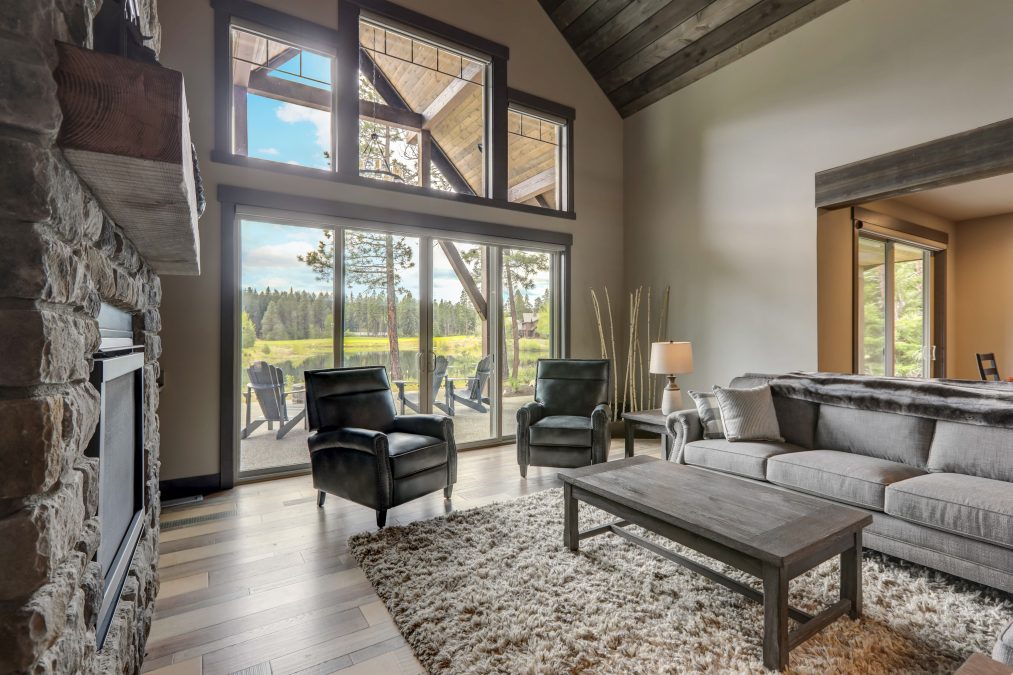Gone are the days of traditional mountain home interiors, demarcated by iconic references like log, stone, and antlers. With the influx of home buyers from all over the country, “Steamboat style” is no longer defined by a Ralph Lauren ideal of the American West. “Our niche is change,” says Olivia Kimmeth, a Steamboat-based interior designer and owner of Olivia’s Home Furnishings. “With people who are moving here from all over the country, our definition of mountain modern has changed, and we have to change with it.”
Olivia asks her clients to start the design process using Steamboat’s beautiful surroundings as inspiration. “When clients ask me where to start, I have them take a moment to look out at the mountains. That is our canvas. That’s why people move here.” If the only constant is change, there are still some things that stay the same. Olivia gives us the rundown on what the term “Steamboat Style” means today.

Breaking down the barriers.
Unlike the more rustic mountain lodge-style homes of the past, today’s mountain home features open floorplans with tall ceilings, big windows, and lots of light. “The goal is to capture the views with as much glass as possible,” she says. Most remodel projects begin with tearing down walls, and architects are designing more modern homes with open spaces intended for gathering. “There are no more individual rooms where you are separated. The idea is to create a space for friends and family to come together.”

Putting it in neutral.
“The majority of homes we do are a neutral palate, especially on the walls,” Olivia says. Gone are the heavy materials associated with mountain homes like log, wood, and stone. “You might have one accent wall that references those materials, like in a bedroom to make it feel cozy, but mostly we’re seeing materials like Venetian plaster with a very smooth finish. No more textured walls.” Pops of color are achieved with rugs, accessories, and furniture, but overall, it’s a more minimalist, modern vibe. “The rule is less is more,” Olivia says. “And wall paper is coming back in style, adding color and texture.”

City meets mountains.
When it comes to the definition of a “mountain-specific interior,” it’s now a matter of personal taste. “In the last year and a half, we’ve had people moving here from all over the country; California, Texas, New York, Chicago,” Olivia says. That means having to adjust to a wide variety of styles and sensibilities, but it also means urban influences are making their way into the Steamboat design landscape. Instead of wood and stone, think cable lines, steel beams, a lot of iron. “We’re seeing a lot of that industrial look that’s very modern. There’s definitely an urban influence,” Olivia says.

A new breed of mudroom.
“In Steamboat, we are known for our mudrooms,” Olivia says. This is the space that is located between the garage and the kitchen where all of our mountain lifestyle items—from muddy boots and snow-soaked jackets to helmets and enough gear to fill a retail store—can be stored easily and efficiently for the next day’s adventure. Olivia says the traditional mudroom just got a facelift and has been replaced by an atrium, a room full of windows and glass. “The whole area is designed to let in those views, so before you walk into the home, you go through this shiny room with a lot of light and glass,” she says. When it comes to Steamboat style, the mudroom, like most every other part of the house, has become even more elevated. //oliviashomefurnishings.com

